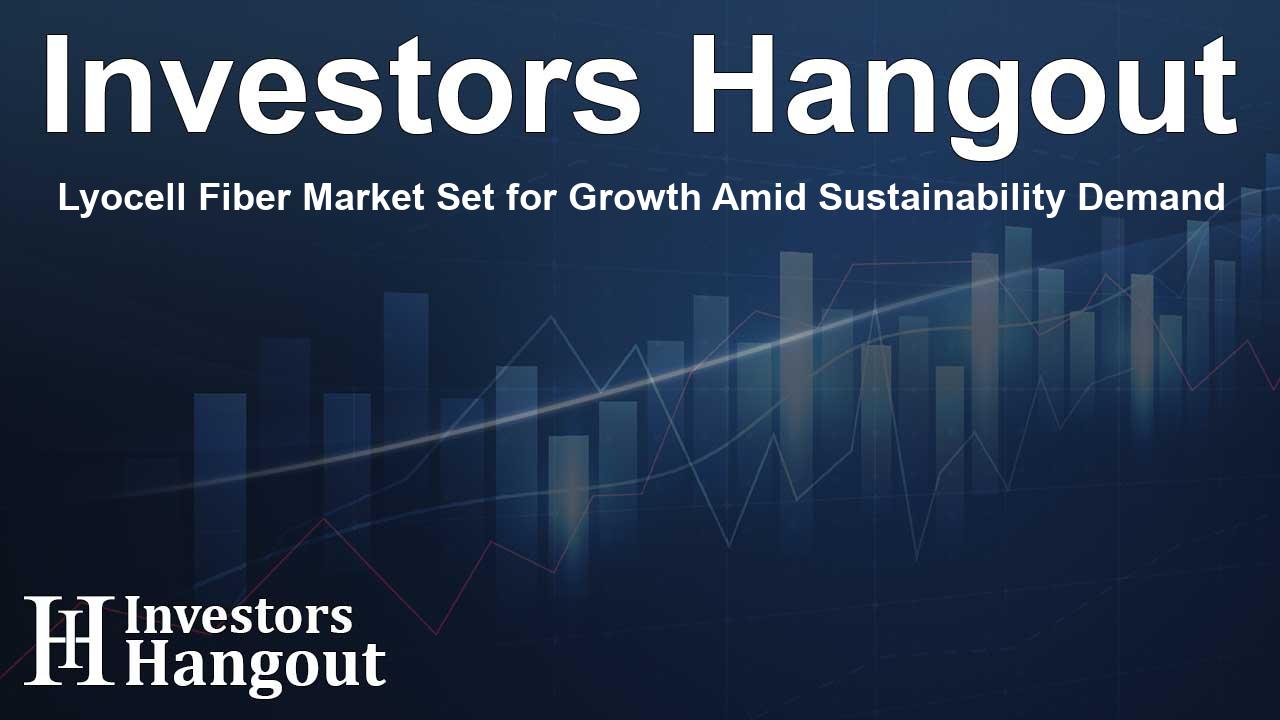Lyocell Fiber Market Set for Growth Amid Sustainability Demand

Understanding the Lyocell Fiber Market Growth
The global lyocell fiber market is on the brink of remarkable growth, reflecting a surge in demand for sustainable textiles across various industries. As of 2022, the market was valued at USD 1.3 billion, carving a strong foundation within the textile and apparel sectors. With a projected Compound Annual Growth Rate (CAGR) of 10.20%, it is anticipated to balloon to an impressive USD 3.43 billion by 2032.
Drivers Behind the Growing Lyocell Fiber Market
Demand for Sustainable Textiles
The push for environmental sustainability is significantly boosting the demand for lyocell fiber. Sourced from wood pulp cellulose, this fiber is biodegradable and produced using eco-friendly methods, including closed-loop systems that drastically reduce water and chemical waste. Pioneers in this field, such as Lenzing AG, are leading the way with their TENCEL™ Lyocell fibers, which recycle over 99% of the solvents and water used during production. Innovative offerings like Birla Cellulose's Nullarbor fiber, which surpasses traditional lyocell in strength and fineness, further showcase the industry's commitment to sustainability.
Expanding Applications Across Sectors
Lyocell fiber’s superior properties make it increasingly popular in a variety of applications. In the apparel industry, it's a preferred choice for activewear, casual clothing, and intimate garments due to its softness and moisture management capabilities. Additionally, its hypoallergenic nature caters well to sensitive skin, promoting adoption in intimate products. The rise in demand for high-quality, sustainable home textiles, such as bedding and curtains, also fuels lyocell fiber use.
Healthcare and Hygiene Sector Adoption
In recent years, the healthcare sector has increasingly turned to lyocell fiber for its inherent biodegradability and suitability for single-use products. Lenzing recently launched LENZING™ Lyocell Dry, which improves moisture management in hygiene products, offering innovative solutions that were previously only possible with synthetic fibers. This fiber can decompose in marine environments within 30 days, contrasting starkly with traditional synthetic alternatives.
Market Challenges for Lyocell Fiber
Production Costs and Raw Material Availability
The path to increased production of lyocell fiber is fraught with challenges, primarily due to high production costs and limited availability of sustainably sourced raw materials. Establishing and maintaining production facilities requires significant capital investment. The restricted availability of responsibly sourced wood pulp adds another layer of complexity, potentially disrupting supply chains and hampering growth.
Competition from Alternative Fibers
Lyocell fiber faces stiff competition from well-established alternatives, such as cotton and polyester, which are often more cost-effective. While the sustainability and performance of lyocell present clear advantages, its higher price point can deter price-sensitive consumers from making a switch. Furthermore, established supply chains and economies of scale for these traditional fibers challenge lyocell's market penetration.
Dyeing and Finishing Complexities
Despite its numerous benefits, lyocell fiber poses dyeing and finishing challenges. The fiber's high absorbency can sometimes lead to uneven dye uptake, resulting in inconsistent colors in final products. Overcoming these technical difficulties often necessitates specialized equipment and expertise, bolstering production costs and making it less appealing to manufacturers.
Growth Opportunities in the Lyocell Fiber Market
Embracing Sustainability Trends
Globally, an increasing focus on sustainability heralds substantial growth opportunities for the lyocell fiber market. With consumer preferences shifting towards eco-friendly materials, lyocell fiber stands out due to its biodegradable properties and environmentally friendly manufacturing processes. Industries like fashion and home textiles are driving demand, making lyocell a favored choice among manufacturers seeking sustainable solutions.
Innovation in Product Development
Constant innovation in manufacturing processes and product development offers vast opportunities for expansion in the lyocell fiber market. Manufacturers are successfully blending lyocell with other fibers, creating textiles with enhanced attributes such as softness and durability. Its applications now extend to technical textiles and medical uses, demonstrating its wide-ranging versatility.
Emerging Markets Presenting New Opportunities
Growing economies, particularly in regions seeing rapid industrialization and urbanization, are fostering opportunities for lyocell fiber manufacturers. Rising disposable incomes and increased consumer awareness about sustainable products are paramount in driving demand for eco-friendly textiles in these regions. Additionally, e-commerce is making lyocell fiber products more accessible to consumers.
Conclusion: The Future of Lyocell Fiber
With its remarkable growth trajectory fueled by sustainability trends and advancements in manufacturing, the lyocell fiber market is poised to play a vital role in the future of textiles. As innovation continues, its application base expands, paving the way for a more sustainable and eco-friendly approach across various industries.
Frequently Asked Questions
What is lyocell fiber?
Lyocell fiber is a biodegradable textile made from cellulose derived from wood pulp, recognized for its eco-friendly production methods.
What industries utilize lyocell fiber?
Lyocell fiber is used across multiple industries, including apparel, home textiles, healthcare, and hygiene products.
Why is there a growing demand for lyocell fiber?
Increasing consumer awareness regarding sustainability and the benefits of eco-friendly materials are driving demand for lyocell fiber.
What challenges does the lyocell fiber market face?
The market faces challenges like high production costs, competition from alternative fibers, and complexities in dyeing and finishing processes.
How is the lyocell fiber market expected to grow?
The lyocell fiber market is projected to grow significantly by 2032, driven by rising sustainability trends and increased adoption in various sectors.
About The Author
Contact Evelyn Baker privately here. Or send an email with ATTN: Evelyn Baker as the subject to contact@investorshangout.com.
About Investors Hangout
Investors Hangout is a leading online stock forum for financial discussion and learning, offering a wide range of free tools and resources. It draws in traders of all levels, who exchange market knowledge, investigate trading tactics, and keep an eye on industry developments in real time. Featuring financial articles, stock message boards, quotes, charts, company profiles, and live news updates. Through cooperative learning and a wealth of informational resources, it helps users from novices creating their first portfolios to experts honing their techniques. Join Investors Hangout today: https://investorshangout.com/
The content of this article is based on factual, publicly available information and does not represent legal, financial, or investment advice. Investors Hangout does not offer financial advice, and the author is not a licensed financial advisor. Consult a qualified advisor before making any financial or investment decisions based on this article. This article should not be considered advice to purchase, sell, or hold any securities or other investments. If any of the material provided here is inaccurate, please contact us for corrections.
